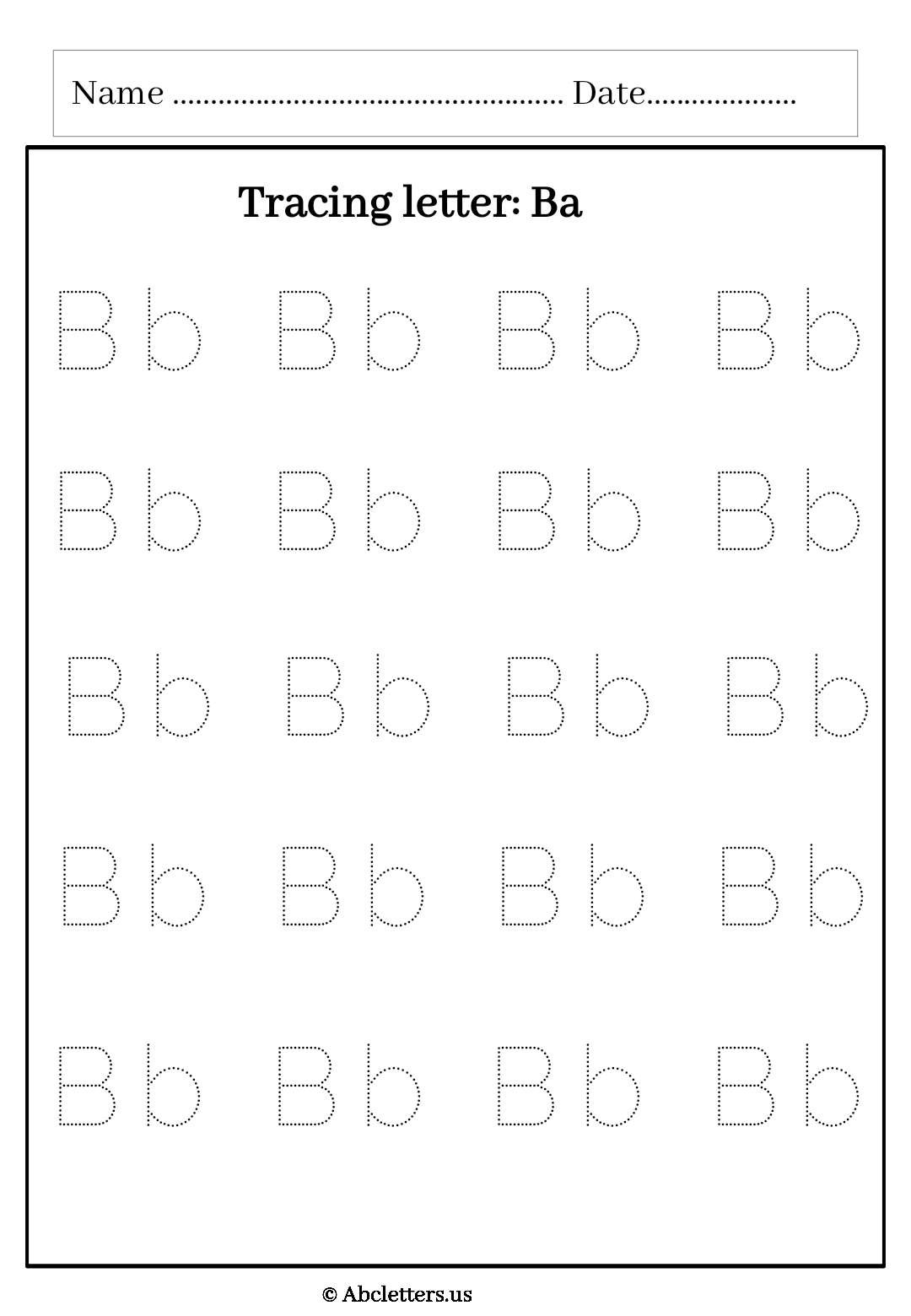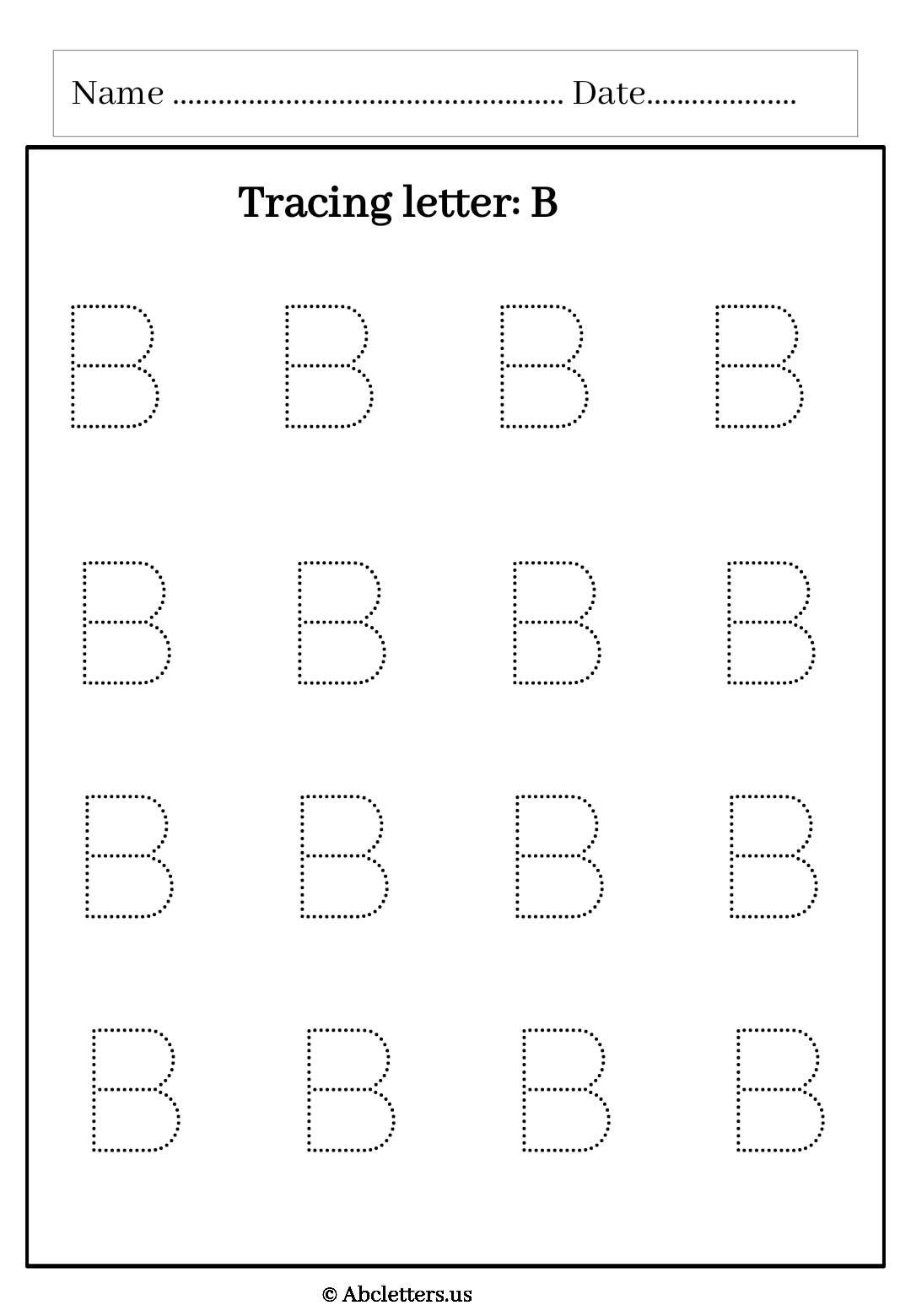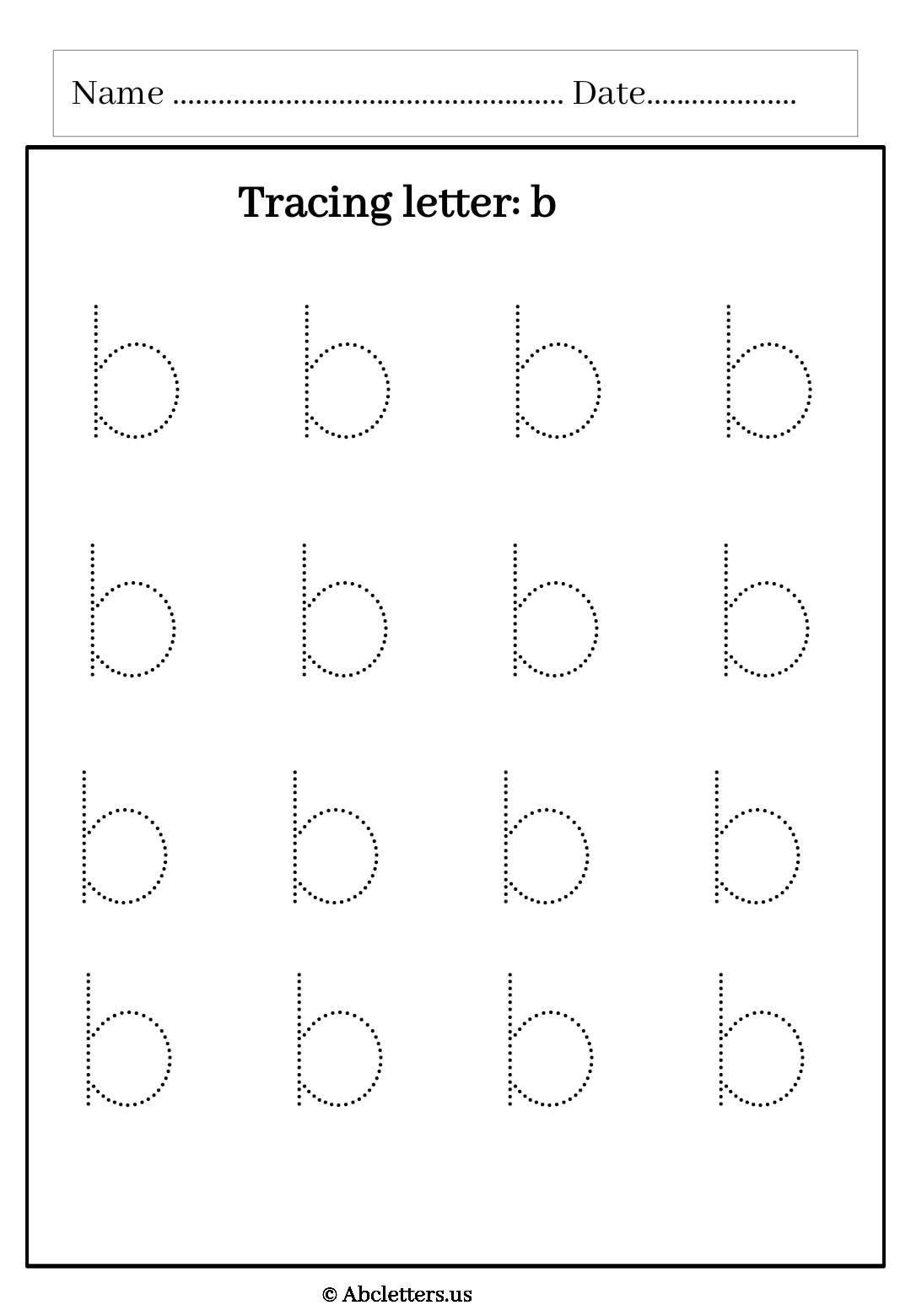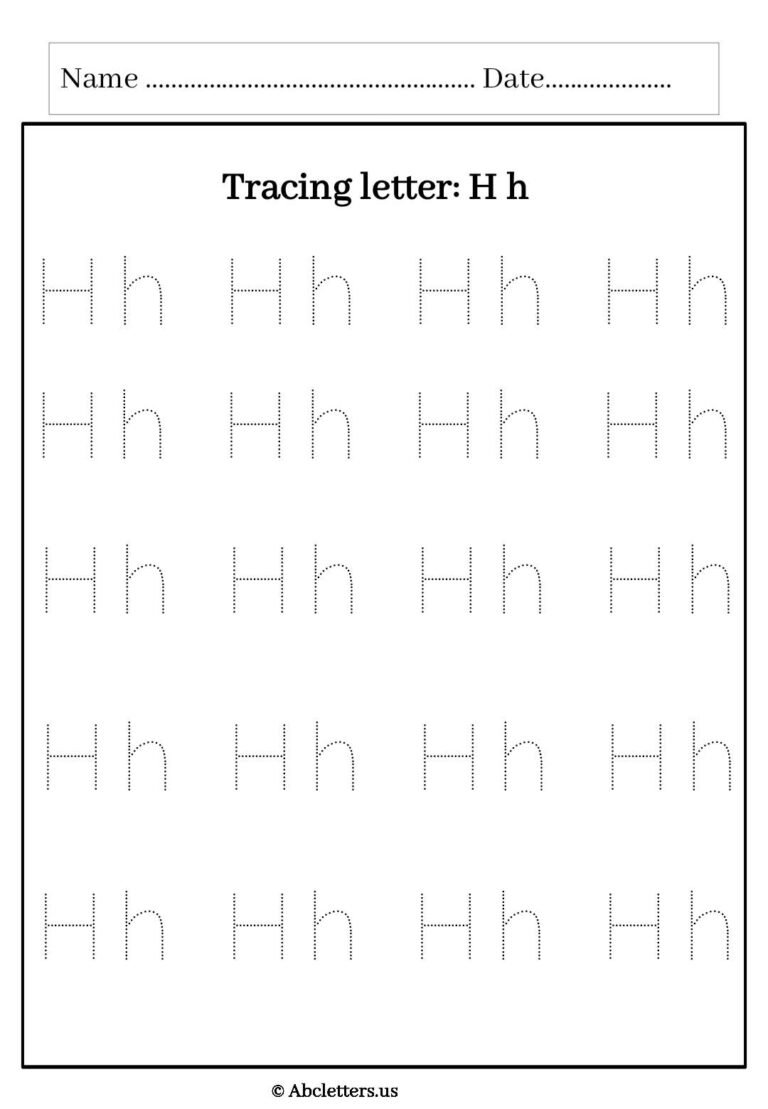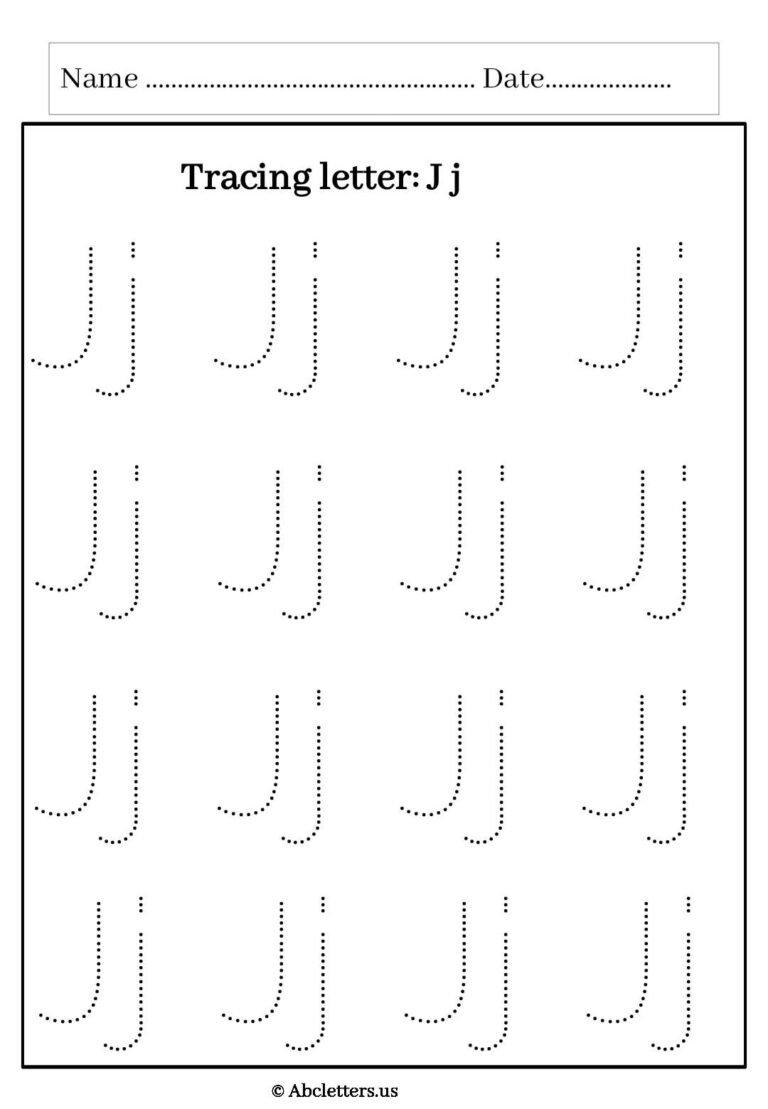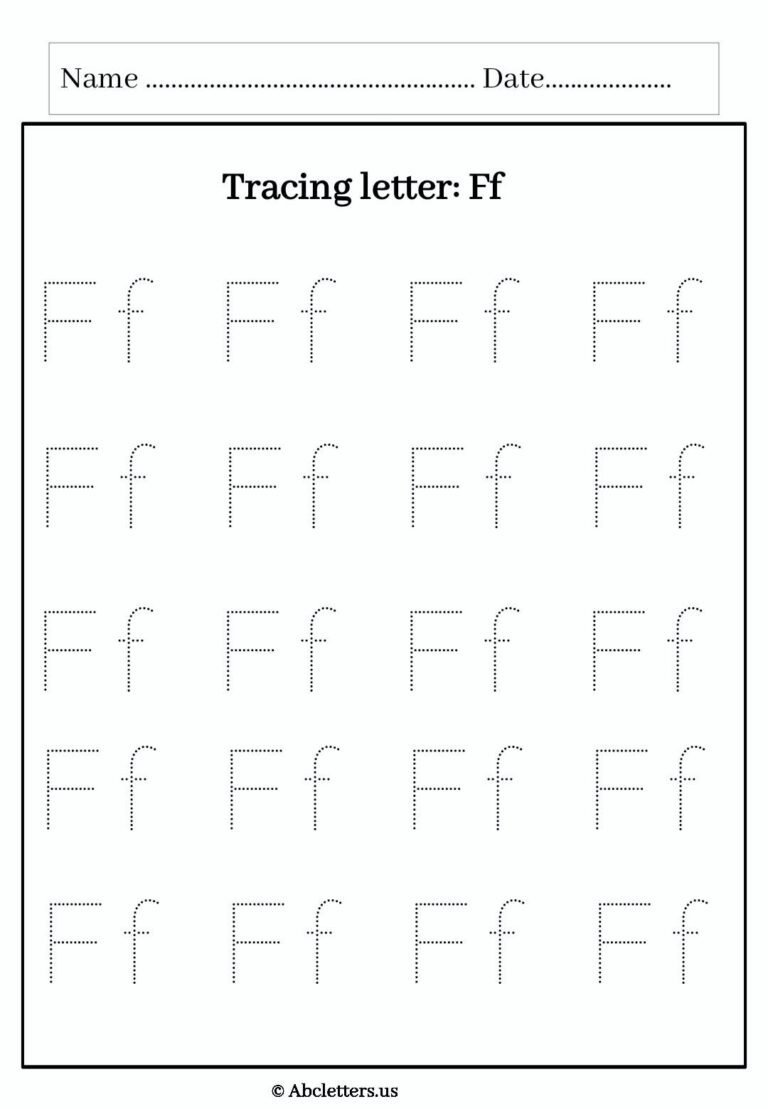Letter B Tracing Worksheets Free Printable
In today’s educational landscape, the adherence to American Common Core State Standards has become an imperative for educators and parents alike. With a focus on preparing students for success in the 21st century, these standards provide a comprehensive framework that promotes critical thinking and literacy skills from an early age.
In line with this commitment to excellence, we present an engaging and interactive resource: the Tracing Letter B Worksheets. Designed specifically for preschoolers, these worksheets offer a fun and effective way to introduce uppercase and lowercase letter B tracing exercises while aligning with the rigor of the Common Core State Standards.
Let us embark on this exciting learning journey as we trace the captivating world of the letter B!
Tracing Letter B Uppercase and Lowercase Worksheet
Materials Preparation: Gather a pencil or marker and the uppercase and lowercase letter B tracing worksheet.
Introduction: Introduce the uppercase and lowercase letter B to the learner. Explain their sounds in words like “ball” and “butterfly.”
Uppercase Tracing: Focus on the uppercase letter B first. Guide the learner to place their writing tool at the starting point of the uppercase B on the worksheet. Instruct them to follow the lines, tracing the letter B while maintaining a steady hand and top-to-bottom stroke order.
Lowercase Tracing: Move on to lowercase letter b. Encourage the learner to position their writing tool at the starting point of the lowercase b on the worksheet. Similarly, guide them to trace the letter B within the lines, paying attention to the stroke order and direction.
Positive Reinforcement: Throughout the tracing process, offer positive reinforcement and praise for their effort. Display their traced letters proudly to boost their confidence and sense of accomplishment.
Kids can enhance their letter recognition skills and develop fine motor control by practicing uppercase and lowercase letter B tracing. This engaging activity promotes early literacy and sets the foundation for effective handwriting.
Tracing Letter B Uppercase Worksheet
Materials Preparation: Prepare a pencil or marker and the uppercase letter B tracing worksheet.
Introduction: Introduce the uppercase letter B to the learner. Explain that this is the letter B, and it makes a sound in words like “ball” and “banana.”
Tracing Process: Guide the learner to start at the designated starting point of the uppercase letter B on the worksheet. Instruct them to follow the lines, tracing the letter B with a steady hand and paying attention to the stroke order.
Positive Reinforcement: Offer positive feedback and encouragement as they trace the letter B. Celebrate their effort and display their work, boosting their confidence and enthusiasm.
Tracing the uppercase letter B enhances letter recognition and fine motor skills, setting the groundwork for successful handwriting. This activity promotes engagement and learning in a fun and interactive manner.
Tracing Letter B Uppercase With 3 Lines Worksheet
Materials Preparation: Prepare a pencil or marker and the uppercase letter B tracing worksheet with three lines.
Introduction: Introduce the uppercase letter B to the learner. Explain that this is the letter B, and it makes a sound in words like “ball” and “bird.”
Tracing Process:
- Guide the learner to position their writing tool at the starting point of the uppercase B on the worksheet.
- Utilize the three lines as guides, directing them to trace the letter B while keeping their strokes within the lines.
- Emphasize maintaining a steady hand movement and following a top-to-bottom tracing order.
Positive Reinforcement: Offer positive feedback as they trace the letter B. Celebrate their effort and showcase their work, fostering a sense of accomplishment and boosting their confidence.
Kids can refine their letter recognition skills and develop controlled hand movements by practicing uppercase letter B tracing with three lines. This interactive activity contributes to their early literacy skills and lays the foundation for effective handwriting.
Tracing Letter b Lowercase Worksheet
- Materials Preparation: Prepare a pencil or marker and the lowercase letter “b” tracing worksheet.
- Introduction: Introduce the lowercase letter “b” to the learner. Explain that this is the letter “b,” and it makes a sound in words like “ball” and “book.”
- Tracing Process: Guide the learner to start at the worksheet’s designated starting point of the lowercase “b.” Instruct them to follow the lines, tracing the letter “b” while maintaining a steady hand and paying attention to the stroke order.
- Positive Reinforcement: Offer positive feedback and encouragement throughout the tracing process. Celebrate their effort and display their work proudly, boosting their confidence and motivation.
By practicing lowercase letter “b” tracing, kids enhance their letter recognition skills and develop fine motor control. This interactive activity supports early literacy and contributes to developing writing skills.
Tracing Letter b Lowercase With 3 Lines Worksheet
Materials Preparation: Prepare a pencil or marker and the lowercase letter “b” tracing worksheet with three lines.
Introduction: Introduce the lowercase letter “b” to the learner. Explain that this is the letter “b,” and it makes a sound in words like “ball” and “bear.”
Tracing Process:
- Guide the learner to position their writing tool at the starting point of the lowercase “b” on the worksheet.
- Utilize the three lines as guides, directing them to trace the letter “b” while keeping their strokes within the lines.
- Emphasize maintaining a steady hand movement and following a top-to-bottom tracing order.
Positive Reinforcement: Offer positive feedback and encouragement as they trace the letter “b.” Celebrate their effort and showcase their traced letter, fostering a sense of accomplishment and boosting their confidence.
By practicing the lowercase letter “b” tracing with three lines, kids can enhance their letter recognition skills and refine their fine motor control. This engaging activity contributes to early literacy and helps establish the foundations for effective handwriting.
Printable Tracing Letter B: Completely Free of Charge
Explore our valuable resource – a printable tracing worksheet for the letter B. This resource is entirely free, providing an excellent opportunity for kids to practice tracing the lowercase letter “b.”
Whether you’re a parent, teacher, or caregiver, feel free to download and share this printable to support young learners in developing their letter recognition and fine motor skills.
It’s a small yet impactful step towards fostering early literacy skills. Click the link to access the printable and let your kids embark on an engaging tracing journey. Your support is invaluable in creating effective and enjoyable learning experiences for children.
Fun and Educational: Learning to Trace Letter B for US Kids
Embark on a delightful learning journey as US kids explore the world of letter B tracing. Discover how this activity becomes both enjoyable and educational:
Playful Exploration: Make tracing the letter B an exciting exploration. Utilize vibrant crayons or markers to add a splash of color to the experience.
Creative Worksheets: Engage with worksheets that integrate imaginative activities alongside tracing practice. This sparks creativity while enhancing letter recognition.
Connect-the-Dots: Transform tracing into a thrilling adventure by incorporating connect-the-dots activities. Kids uncover the shape of the letter B with anticipation and joy.
Interactive Apps: Constructively introduce technology using interactive tracing apps. These provide a dynamic platform for learning while having fun.
Tactile Learning: Employ textures like sandpaper or fabric to trace the letter B. This sensory approach adds an exciting tactile dimension to the process.
Alphabet Storytime: Read alphabet-themed stories that spotlight the letter B. Associate words from the story with the letter to foster better understanding.
Baking Fun: Incorporate letter B tracing into baking endeavors. Create alphabet-shaped cookies and trace the letter B with icing—a delicious and educational treat.
Outdoor Exploration: Venture outside to find natural materials like sticks or leaves. Use them to form the shape of the letter B while enjoying the outdoors.
Parent-Child Bonding: Encourage parents to join in the tracing activities. This bonding experience not only enhances learning but also creates lasting memories.
Artistic Expression: Fuse tracing with art by allowing kids to embellish their traced letters with doodles or drawings, transforming them into mini masterpieces.
Recognition Games: Play games where kids identify and trace the letter B in various contexts, such as spotting it on signs or labels during family outings.
Progress Celebrations: Acknowledge each tracing milestone with praise and a small reward. Celebrating achievements fuels enthusiasm and motivation.
Group Learning: Organize letter-tracing playdates with friends. Group activities foster a collaborative environment that nurtures learning through social interaction.
Everyday Integration: Point out letter B shapes in everyday items, from books to packaging. This real-world connection enhances letter recognition.
Alphabet Songs: Sing along to catchy alphabet songs emphasizing the letter B. Music adds an enjoyable and memorable dimension to learning.
Storytelling with B: Invent imaginative stories featuring words that start with the letter B. This creativity reinforces letter association.
Themed Crafts: Craft sessions focused on the letter B are entertaining and educational. Create “B is for Butterfly” or “B is for Boat” crafts.
Encourage Curiosity: Foster curiosity by allowing kids to ask questions about the letter B. Answering these inquiries enhances their understanding.
Praise and Positive Feedback: Offer ample praise for effort and progress. Positive feedback cultivates a confident and motivated approach to learning.
Celebrate Mastery: The journey culminates in mastering letter B tracing. Celebrate this achievement and inspire a continued love for learning.
Remember, the key is to intertwine fun and learning, creating an enjoyable experience that ignites curiosity and paves the way for future educational endeavors.
Conclusion Points
In conclusion, the tracing letter B worksheets for preschool are an excellent resource for teaching young children how to write the letter B. By providing both uppercase and lowercase versions; these worksheets offer a comprehensive approach to learning this important skill.
Moreover, these worksheets align with the American Common Core State Standards, ensuring that students receive a quality education meeting national standards.
By using these worksheets, educators can help their students develop fine motor skills and improve their handwriting. So why wait? Start using these tracing letter B worksheets in your classroom today and watch your students’ writing skills soar!
FAQs
1. How can I download the Tracing Letter B Uppercase Worksheet?
You can download the worksheet by clicking the provided link and saving it to your computer.
2. Can I use this worksheet for commercial purposes?
No, this worksheet is intended for educational purposes only and should not be used for commercial activities.
3. Is there a separate worksheet for tracing the lowercase letter B?
Yes, a separate worksheet is available specifically designed for tracing lowercase letter B.
4. Can I print multiple copies of the worksheet?
Yes, you can print as many copies as needed for personal or classroom use.
5. Do I need any special software to open the downloaded file?
No, the file format is typically in PDF, which can be opened using widely available software like Adobe Acrobat Reader.
Yes, our website offers a variety of resources, including worksheets, activities, and games related to letter tracing and other educational topics.
Yes, you can share the worksheet with friends or colleagues if it is done for educational purposes and not for profit.
8. Can this worksheet be used by children of all ages?
The Tracing Letter B Uppercase Worksheet is designed for children learning about letters and their formation. It can benefit learners of various ages depending on their needs and abilities.
